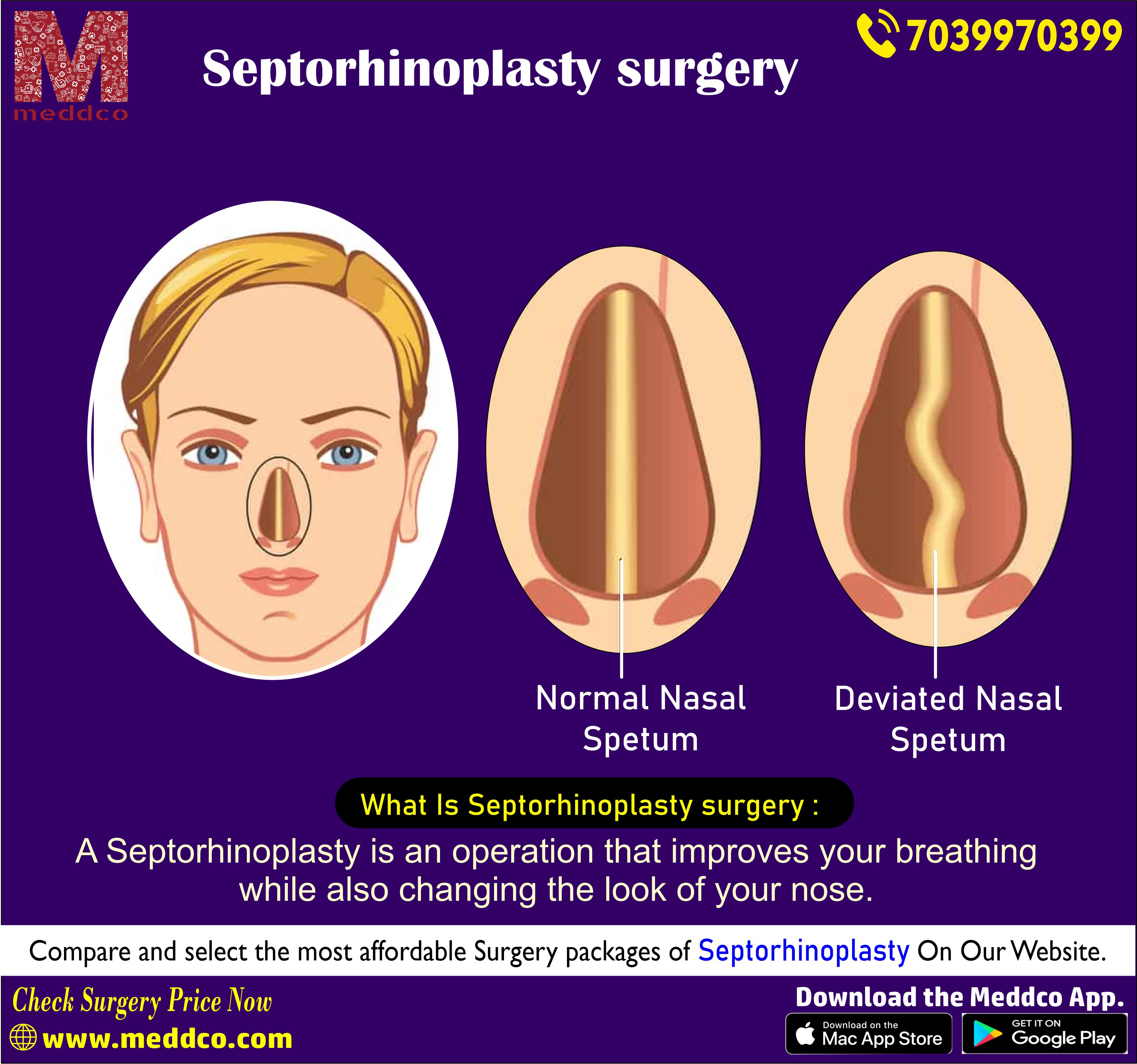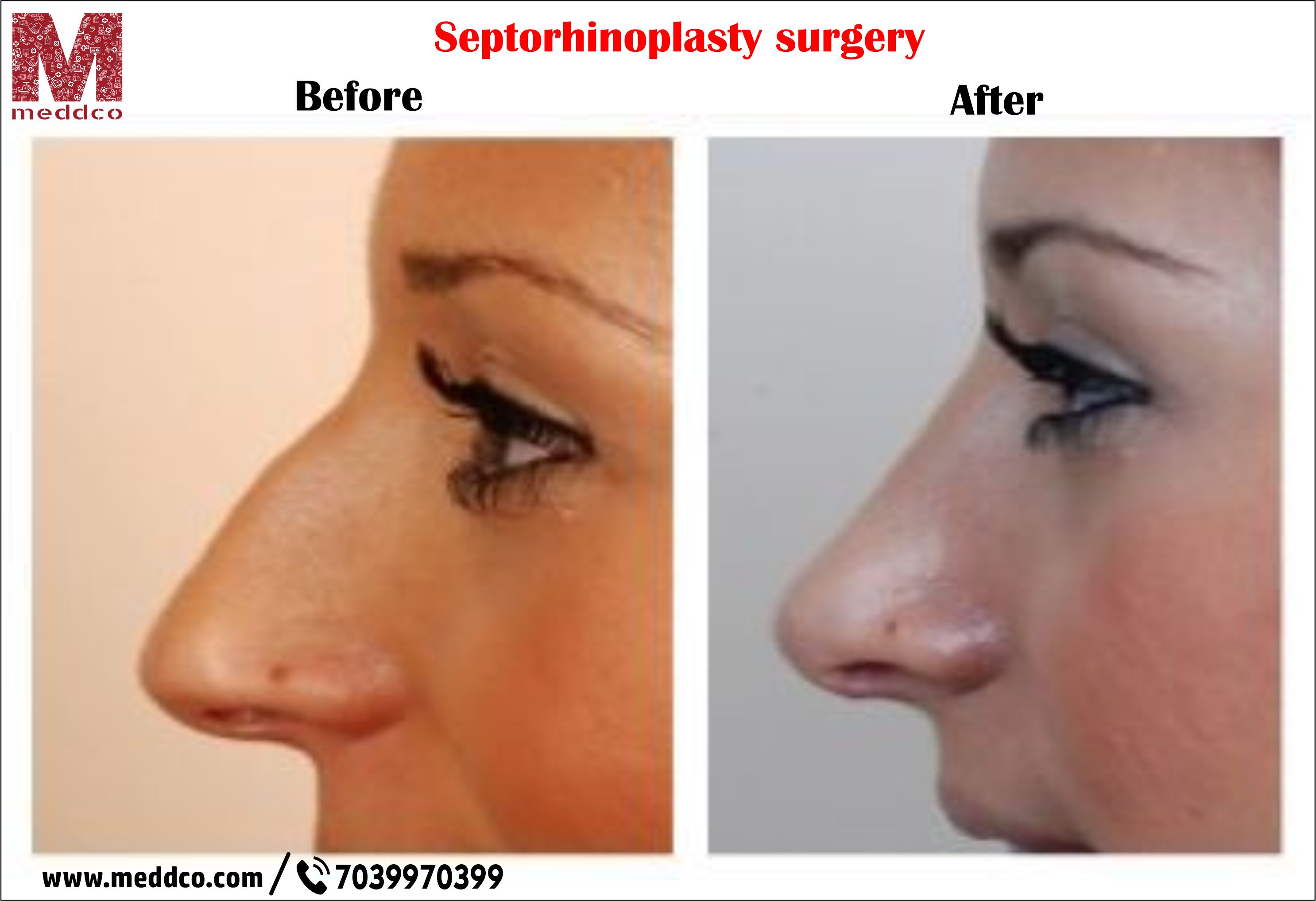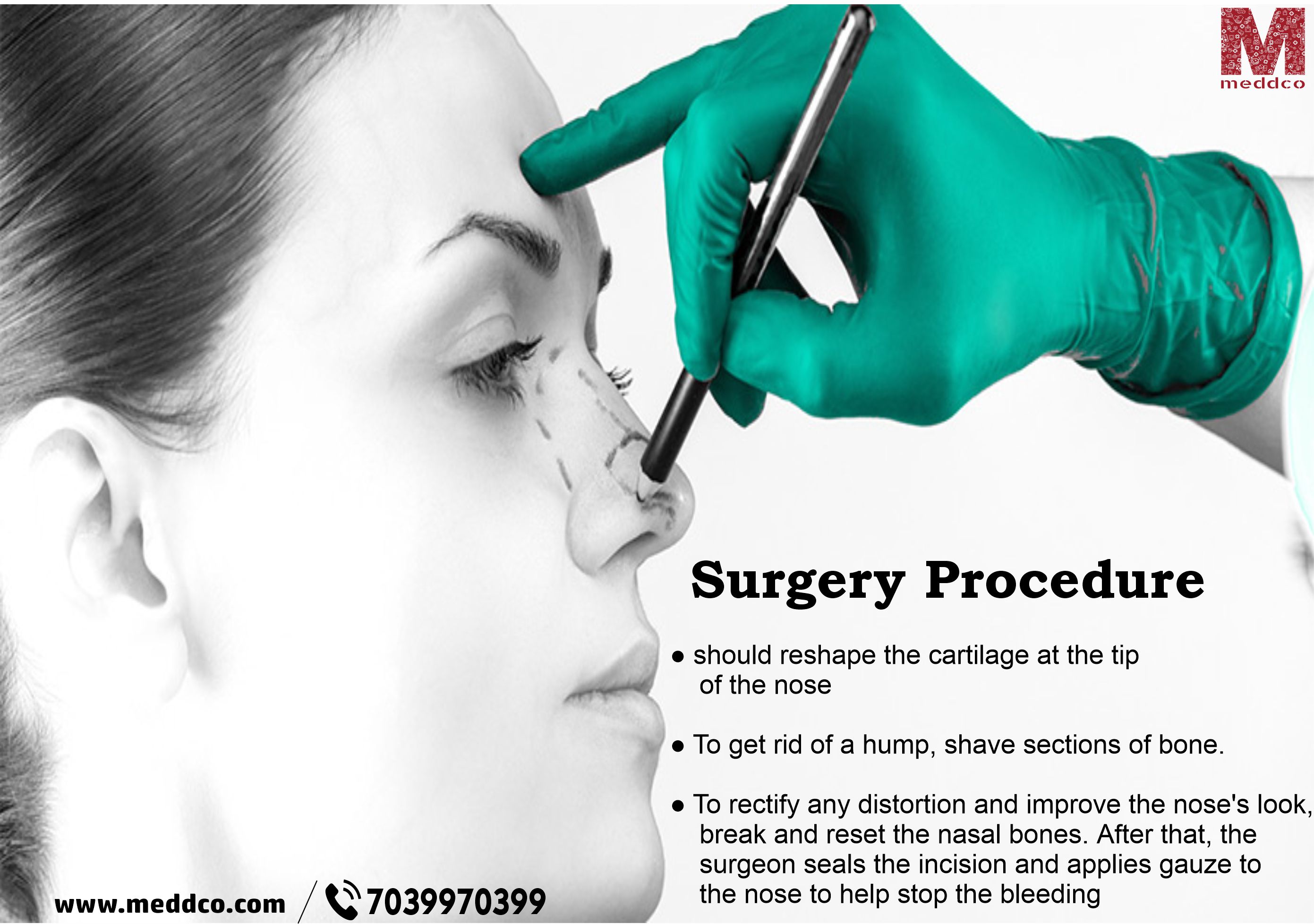

: Admin : 2022-04-07
A septorhinoplasty is an operation that improves your breathing while also changing the look of your nose. Septorhinoplasty is a surgery that combines two procedures:
Septoplasty, the cartilage in the middle of your nose, between your nostrils, is known as the septum. If this cartilage is twisted or misplaced, you have a deviated septum. Breathing can be difficult due to a deviated septum, which can also cause dry mouth, snore, and other issues. By relocating and straightening your septum, a septorhinoplasty can address this condition.
Why is it required to have a septoplasty?
Breathing via the nose might be difficult with a deviated septum, forcing you to breathe through your mouth. As a result, septoplasty seems to be the only way to fix it. Mouth breathing might result in dry mouth. At night, the incapacity to inhale via the nose is considerably more of a problem and can disrupt sleep. Septoplasty is occasionally combined with other medical procedures, including sinus surgery or the removal of nasal tumours.
Although septoplasty does not modify the form of the nose, it can pair it with septorhinoplasty, a noise-shaping procedure. Each patient must decide whether or not to have septoplasty to correct a deviated septum. The disease will not harm anyone who can bear the symptoms.
The nose's bones and cartilage help to mould it. Both nostrils should be open, and you'll be able to inhale normally, and your nose should be the size and shape you choose—the majority of persons who have had a successful septorhinoplasty feel happier with their look.

Is there a way to avoid a septorhinoplasty?
You may be able to undergo merely a septoplasty if your nose is obstructed due to a deviated septum. The only method to modify the shape of your nose is to have a rhinoplasty. If your nasal bones are crooked or damaged, a rhinoplasty (typically in conjunction with a septoplasty) is your only choice for improving your breathing.
What is the procedure for a septorhinoplasty?
By removing or modifying the deviated sections of your septum, a septorhinoplasty enhances the function of your nose. The particular approach for your septorhinoplasty will be determined by your surgeon and the corrections or changes that need to be made.
What is a septorhinoplasty surgery like?
You are entirely sedated and asleep throughout a septorhinoplasty. The surgeon creates an incision from within the nose and gently lifts the cartilage and bone in the septum. The section of the cartilage causing the deviation is removed or reshaped, and any other structures that impair breathing, such as the nasal turbinates, may also be treated. The residual bone and tissue are reattached to the bone and tissue in a straight position.
The surgeon may additionally do the following while the incision is still open:

May insert splits or soft plastic sheets into your nose to aid in healing your septum. When the anaesthetic goes off, you can usually go home. The surgeon will remove any splints or packing in the office after surgery.
Post-surgery care
You might have to take special precautions in the weeks that followed your surgery to avoid blood and oedema. Your surgeon will tell you how many of these procedures you'll require and how long they'll take. Following are some frequent post-surgery instructions:
● Sleeping with your head directly is a smart option.
● It's best to avoid blowing your nose.
● Avoid wearing clothing that you must pull over your head.
● Avoid running and other high-intensity aerobic exercises.
The stabilization of your nose will take 3 to 6 months. You may notice changes in your breathing and the contour of your nose as your septum stabilizes. Following surgery, some patients notice changes for up to a year.
Are there any concerns or negative consequences?
Every surgery entails some level of risk. The following are some of the potential dangers of a septorhinoplasty:
● infection due to excessive bleeding, a change in your nose's form
● You have a hole in your septum.
● A blood clot in the nose impairs your sense of smell.
● a negative anaesthetic response
● numbness in your gums, teeth, or nose for a short period
To lessen your chance of problems, notify your surgeon about any medical issues you have. Poor wound healing can be exacerbated by rheumatologic disorders such as lupus or osteoarthritis, smoking, and certain drugs.
nose nose job rhinoplasty operation breathing
No Comments